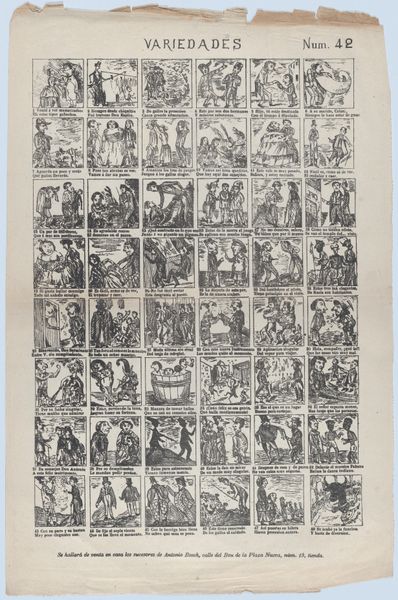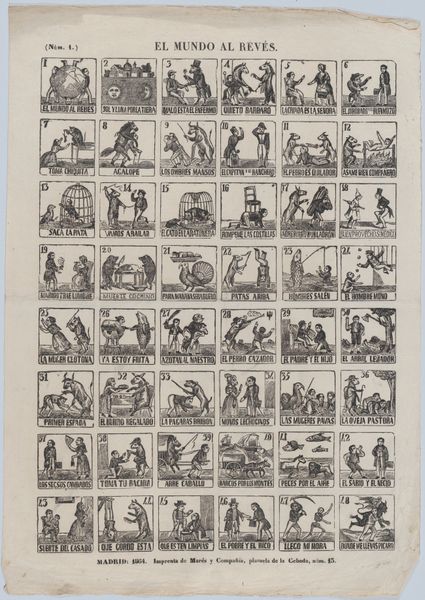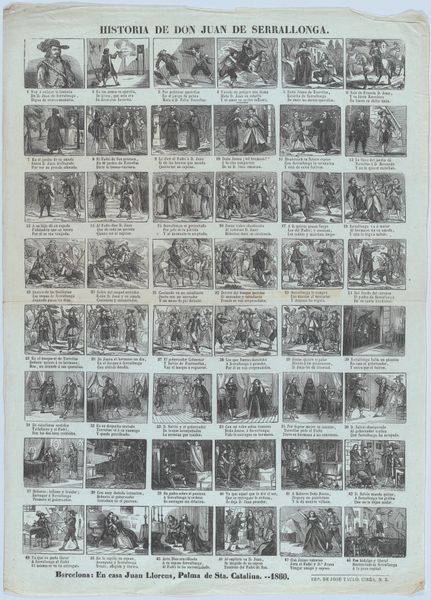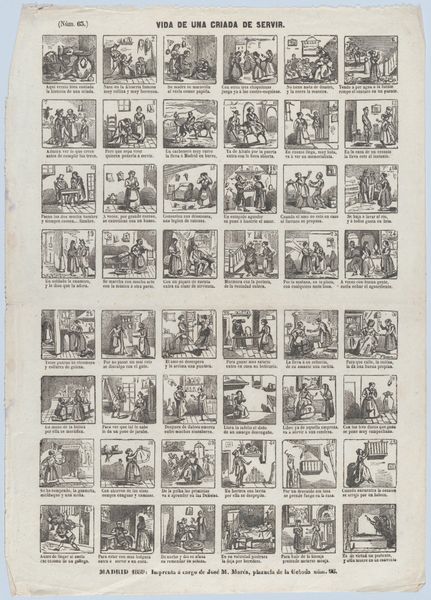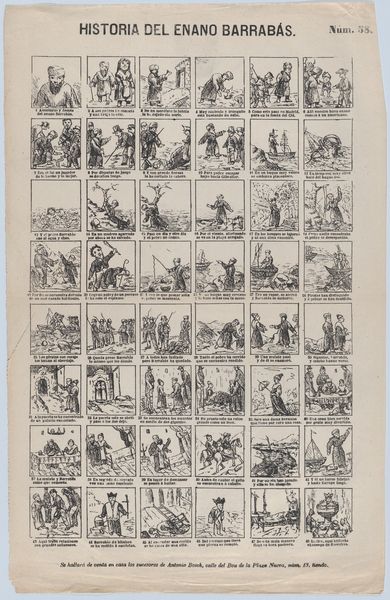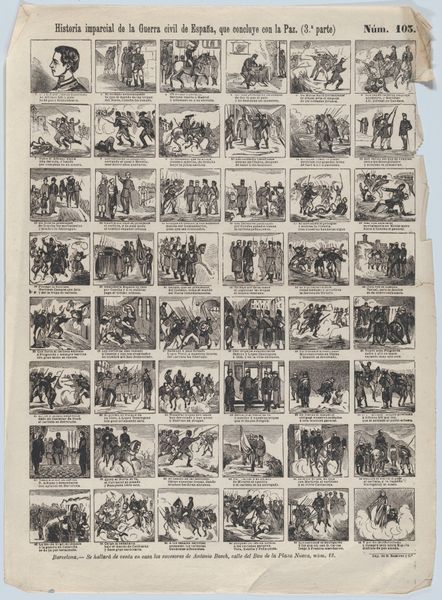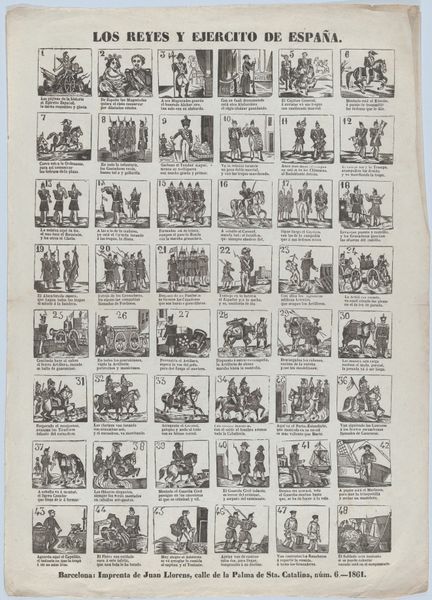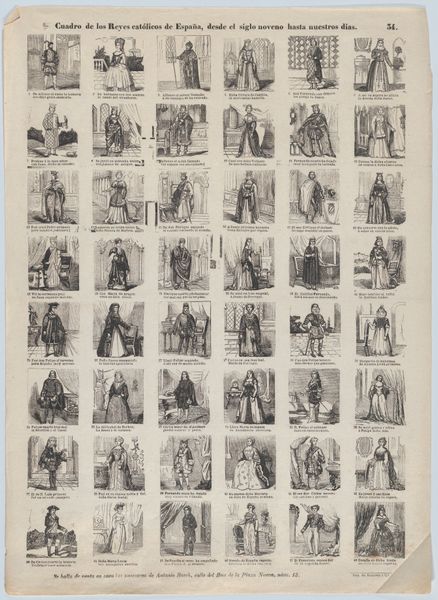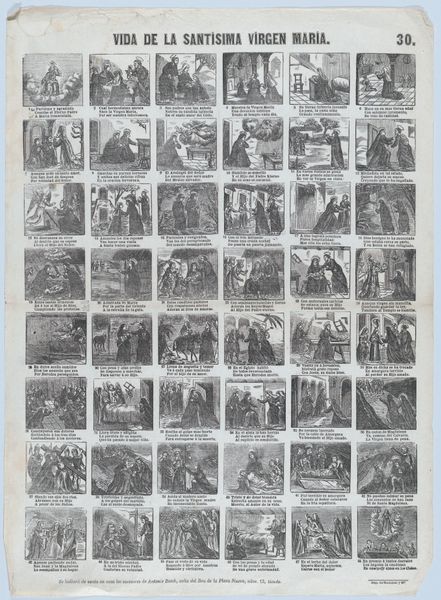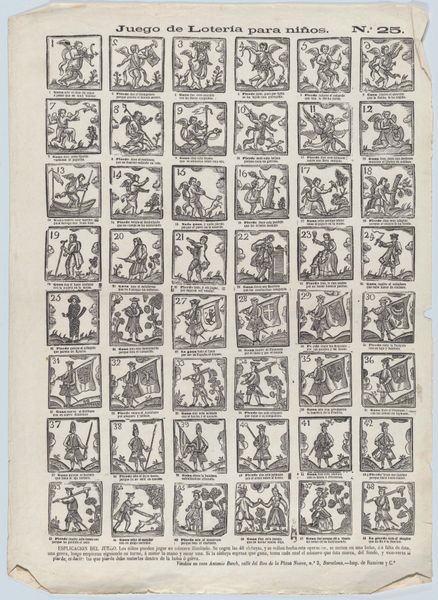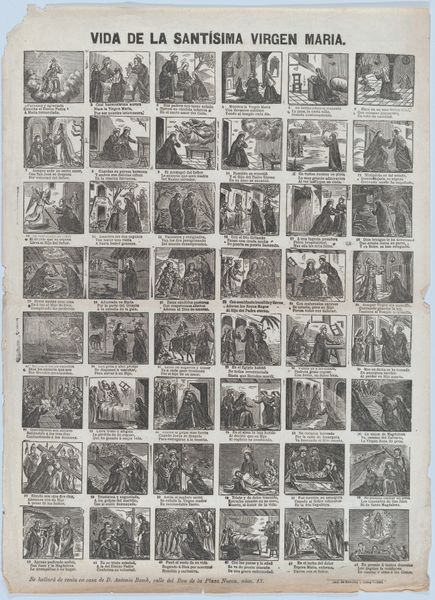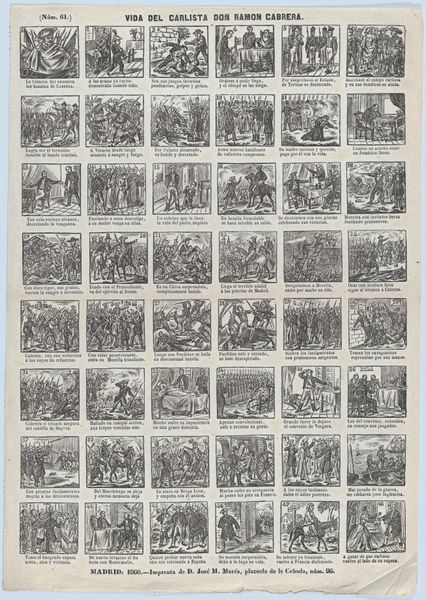
Broadside with 48 scenes showing different women of the world 1860
0:00
0:00
drawing, print
#
portrait
#
drawing
# print
#
figuration
#
orientalism
#
genre-painting
#
history-painting
Dimensions: Sheet: 17 11/16 × 12 3/16 in. (45 × 31 cm)
Copyright: Public Domain
Editor: We're looking at a broadside, a printed sheet titled "Broadside with 48 scenes showing different women of the world" from 1860. It's held at the Metropolitan Museum of Art. There's something… clinical about this. It feels like a collection of specimens rather than a celebration. What jumps out at you? Curator: "Clinical," that's a potent word! It feels less like observation and more like cataloging women almost like butterflies pinned in a display. Look at the styles. You could see how dress was a visual declaration and identity, an identifier if you will. But is the way this image depicts women respectful, is this something truly capturing history? Is this honoring heritage or exotifying, I suppose the right word may be "othering," the portrayed? It feels less like a loving, global hug, and more of a...well, how can you lovingly observe the world with this format? This isn't a question to answer right away, let's stew in it and ponder for a moment. It could make some really amazing art! Editor: Othering, that's interesting. The poses seem a little…stiff, unnatural even. As if they’re not real people. You're right! The artist’s cultural context is key, isn’t it? It colors everything, intentionally or not. But that stifness is a very strange stylistic choice that makes them into "specimens" more. Curator: Exactly! Consider that at the time, there was a fervent need to create order out of an emerging, chaotic global picture, from one perspective, especially that of Spain during its slow decline as an empire. This piece mirrors a very human desire to comprehend our place in a bigger, more interconnected system. To try to know the 'world'. I think, knowing that, we may be able to let it spark further discussion of understanding "others". Editor: That context is helpful. Seeing it now, not as straightforward portraiture, but as an attempt at understanding... though maybe one rooted in misunderstanding. So, even in its failings, it teaches us something valuable. Curator: Precisely! Imperfect mirrors can sometimes show us the truest reflections, and then we grow from it, if we accept the initial wrong or harm done and want to make amends.
Comments
No comments
Be the first to comment and join the conversation on the ultimate creative platform.
